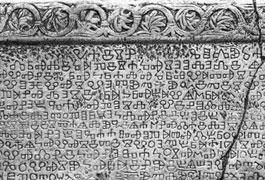Today, Croatia is recognized on a global scale and is present in numerous inscriptions on the UNESCO World Heritage List, and since 1979 it has registered a total of 27 immovable and intangible cultural assets, says Davor Trupković, Director of the Directorate for the Protection of Cultural Heritage.
As a destination of untouched nature and environment, Croatia really offers incredible findings that can excite with their originality today and findings comparable to global and non-European counterparts, says Trupković.

- You are at the head of the Directorate for the Protection of Cultural Heritage of the Ministry of Culture and Media. How would you rate the condition of cultural heritage in Croatia and what does it entail?
Heritage includes tangible and intangible cultural goods that are registered in the Register of Cultural Heritage of the Republic of Croatia. Registered goods acquire legal protection and a basis for investment from both the state budget and other sources of financing, such as funds provided by a World Bank loan, from the European Union Solidarity Fund and other sources of financing.
We always mention the number of cultural goods entered in the Register in order to get an impression of the number in question, how many cultural goods entered in the Register are singled out in relation to the heritage of a much larger number of goods, often extremely important for the local community and perception of space where it appears. Currently, 6,597 protected and preventively protected individual immovable cultural assets, cultural and historical units, landscapes and archeological sites and locations, 2,258 movable cultural assets and collections, protected and preventively protected and 204 intangible cultural assets are entered in the Register. This is a little more than 9,000 entries, which is not a small number for the Republic of Croatia. Also, when we talk about approximately 400 protected cultural and historical sites, it is actually the number of over 100,000 buildings within protected urban areas, which are also covered by the Law on the Protection and Preservation of Cultural Heritage. As a destination of untouched nature and environment, Croatia really offers incredible findings that can excite with their originality today and findings comparable to global and non-European counterparts. Precisely because of this, the achievements of the conservation department must be based on the principle of an affirmative approach to the restoration and use of heritage through a transparent and clear response of conservators to the demands of today.

2. What are the specific steps taken by the Ministry and the Government of the Republic of Croatia to improve the state of cultural heritage in the country?
With the introduction of Geoportal and the Web Register of Cultural Heritage, data on protection, legal regulations that accompany it and the actions necessary to initiate the restoration process can be obtained in a very simple way. We no longer even address the issue of unresolved property and legal relations, as this is a situation that will take many years to at least partially regulate the ownership status of cultural goods, primarily immovable proprty. The Law on the Protection and Preservation of Cultural Heritage for Emergency Interventions in this case uses the tool of proposing a temporary guardian and this has often proved to be a good way to implement emergency measures to save the heritage base that requires further investments.
Every year, the Ministry of Culture and Media publishes the Public Call for Proposing Programs of Public Needs in Culture of the Republic of Croatia for Cultural Property Entered in the Register. With this Call, we show that the Government allocates limited, but still secure funds for the implementation of necessary procedures in the preservation of protected heritage.
Following the earthquake in Zagreb on March 22, 2020 and the larger one, in the vicinity of Petrinja on December 28 and 29, 2020, the Ministry of Culture and Media, headed by Minister Dr. sc. Nina Obuljen Koržinek passed a Decision on the implementation of the inventory of damage to immovable and movable cultural property, and later a series of recommendations, guidelines and decisions on the financing of emergency protection measures to ensure uniform treatment of damaged cultural property. This also served as a basis for applying to the European Union Solidarity Fund, and the Law on the Reconstruction of Earthquake-Damaged Buildings in the City of Zagreb, Krapina-Zagorje and Zagreb Counties was drafted and adopted. The Program of Measures was also adopted, and in September this year, the Sisak-Moslavina and Karlovac counties were included in the amendments to the Act and the new Program of Measures for the Reconstruction of Buildings Damaged by the Earthquake.
Finally, the Ministry of Culture and Media has developed two projects in the field of cultural heritage under the National Recovery and Resilience Plan adopted in July this year. The development of conservation bases will soon begin, which will ensure the development of the e-service “e-konzervatorska podloga” and in the long run improve the protection and revitalization of cultural and historical sites, improve spatial management, achieve greater legal certainty related to conservation, and permanently provide public insight into conservation substrates. The National Recovery and Resilience Plan envisages the implementation of the program of energy renovation of buildings with the status of cultural property, which is a challenge that we will implement with great enthusiasm in an effort to restore cultural property in a modern way without exception in terms of energy management.

3. In your work, what problems do you encounter most often and how much understanding does the wider community show to solve them?
There is a lack of spatial planning in the profession, which has been absent from the segment of spatial management and planning for many years, and the preservation profession has been under fire by the public and in conflict between wishes and opportunities of investors, problems for which neither the number of conservators nor narrow professional specializations can defend or preserve the necessary environment in which a positive creative climate should encourage investment and inclusion of heritage as a sustainable resource. In cooperation with the scientific community, by including the Faculty of Architecture, Faculty of Civil Engineering, Faculty of Geodesy, University of Zagreb, Institute of History, by establishing commissions such as the International Expert Advisory Commission for Structural Restoration of Architectural Heritage in Earthquake-Affected Areas, the Ministry of Culture and Media seeks to create an expert platform with which it can follow through the solution of problems in the preservation of cultural heritage.
Also, by participating in professional conferences, it is necessary to clearly define the position on open access and transparent work of the conservation service in a way that the participatory method determines the priorities of action and investment planning. So far, the response of conservators has proved extremely positive in the list of damages to cultural property affected by the earthquake, based on experiences after the damage caused by the 1979 and 1996 earthquakes in Dubrovnik, but unfortunately also damage in the Homeland War. The response has been great both financially and professionally. We emphasize the response of conservators from the service, employees of the Croatian Restoration Institute, museologists, but also employees of the Civil Protection, volunteers, the Croatian Mountain Rescue Service and members of the Italian “Blue Helmets”. Except in these extraordinary circumstances, the response from the wider community is always positive. Both the scientific and local communities will be happy to engage in a discussion on the values of cultural heritage.
4. What are the risks in cultural heritage management and how to overcome them? What are the specific “tools” in your hands when it comes to this?
Shortly before the earthquake on March 22, 2020, the Ministry of Culture and Media held a conference entitled “Strengthening European Cooperation for the Protection of Cultural Heritage from Risk” as a priority topic within the scope of the Ministry of Culture and Media. The growing impact of climate change on cultural heritage (changes in temperature, rainfall, groundwater, sea level) directly or indirectly attributed to human activities, as well as natural disasters such as earthquakes, fires, floods and sea level rise, was discussed. Such changes have contributed to the need to establish protection measures in line with modern knowledge and technologies and require organized and coordinated cooperation of all stakeholders: national, regional and local authorities, experts from various sectors and international support. This proved to be very quickly accurate and facilitated the cooperation of the wider international community as well. It is known that education, not only of experts and the development of their skills, but also of the public, plays a major role in effective risk management in this case, because regular maintenance of architectural heritage is one of the key steps in damage prevention. In terms of prevention, efforts need to be made to document and research the heritage and to carry out the structural strengthening of buildings, as well as to preserve the smallest remnants of the original and prevent further structural damage. The conference that was held in Dubrovnik provided guidelines, which the European Commission adopted, and which will be beneficial for future activities and upcoming projects. The importance of strengthening cooperation in implementing a long-term vision of cultural heritage management and protection, based on sustainable development strategies and local involvement, raising public awareness and educating young people, strengthening the exchange of knowledge and practices among experts in the field of cultural heritage was emphasized.
5. How important is cooperation at the level of the region, Europe and the world in your work and how is it reflected?
The cultural heritage of the Republic of Croatia is an indisputable supplement in the European environment, therefore cooperation at every level is the basis for analyzing and solving similar challenges. The mentioned topic of risk management repeatedly encourages discussion on methods of identification, analysis and prioritization of risks and especially better understanding of potential risks, importance of monitoring, adjustment process, as well as rapid recovery from threats and sustainable conservation after reconstruction, identifying opportunities provided by participatory management through encouraging the cooperation of all stakeholders in the risk management process, not only in the field of cultural heritage. The interdisciplinary approach that forms the basis of good governance and at the same time has a direct impact on the qualitative principles of intervention and reduction of negative effects is indispensable, from which society can have both cultural and economic benefits.
6. What projects and plans of the Directorate you lead and the Ministry itself can you announce for the upcoming period?
I would especially like to point out the mentioned project of the Ministry of Culture and Media regarding the development of conservation bases, which will be financed by the Mechanism for Recovery and Resilience for the period from 2021 to 2026, and for which about HRK 80,000,000 has been provided. This project will directly contribute to the legal certainty related to conservation, transparent and clear participation of all stakeholders in the process of spatial management established e-service (e-konzervatorska podloga) related to existing e-services (e-građani, Spatial Planning Information System).
Since so far only 10% of protected cultural and historical sites have been made with a valid conservation base, this service will remove administrative obstacles in the process of obtaining permits in accordance with the Law on Protection and Preservation of Cultural Heritage, and citizens and conservation services will benefit from this project.
Improving the business environment by facilitating obtaining permits related to the Law on Protection of Cultural Heritage through the establishment of digital infrastructure and services will also include training of experts to work on conservation bases, development of necessary standards and criteria that will significantly affect public perception of heritage, its values and investments as the basis for its survival.
7. Where is Croatia today when it comes to protection of cultural heritage and how we measure the positions and success of operations?
Today, Croatia is recognized on a global scale and is present in numerous inscriptions on the UNESCO World Heritage List, and since 1979 it has registered a total of 27 immovable and intangible cultural assets. I would especially like to mention 15 intangible cultural assets inscribed on the UNESCO Representative List of the Intangible Cultural Heritage of Humanity, the Musical Expression ojkanje – a phenomenon inscribed on the UNESCO List of Intangible Cultural Heritage in Need of Urgent Protection and the Batana Eco-Museum, an intangible cultural heritage entered in the UNESCO Register of Good Safeguarding Practices. The success of the action is measurable not only by its presence on the UNESCO World Heritage List, but also in the recognizability of the issues and the readiness of the international community for participatory participation in international commissions, proposing possible solutions, and drafting.